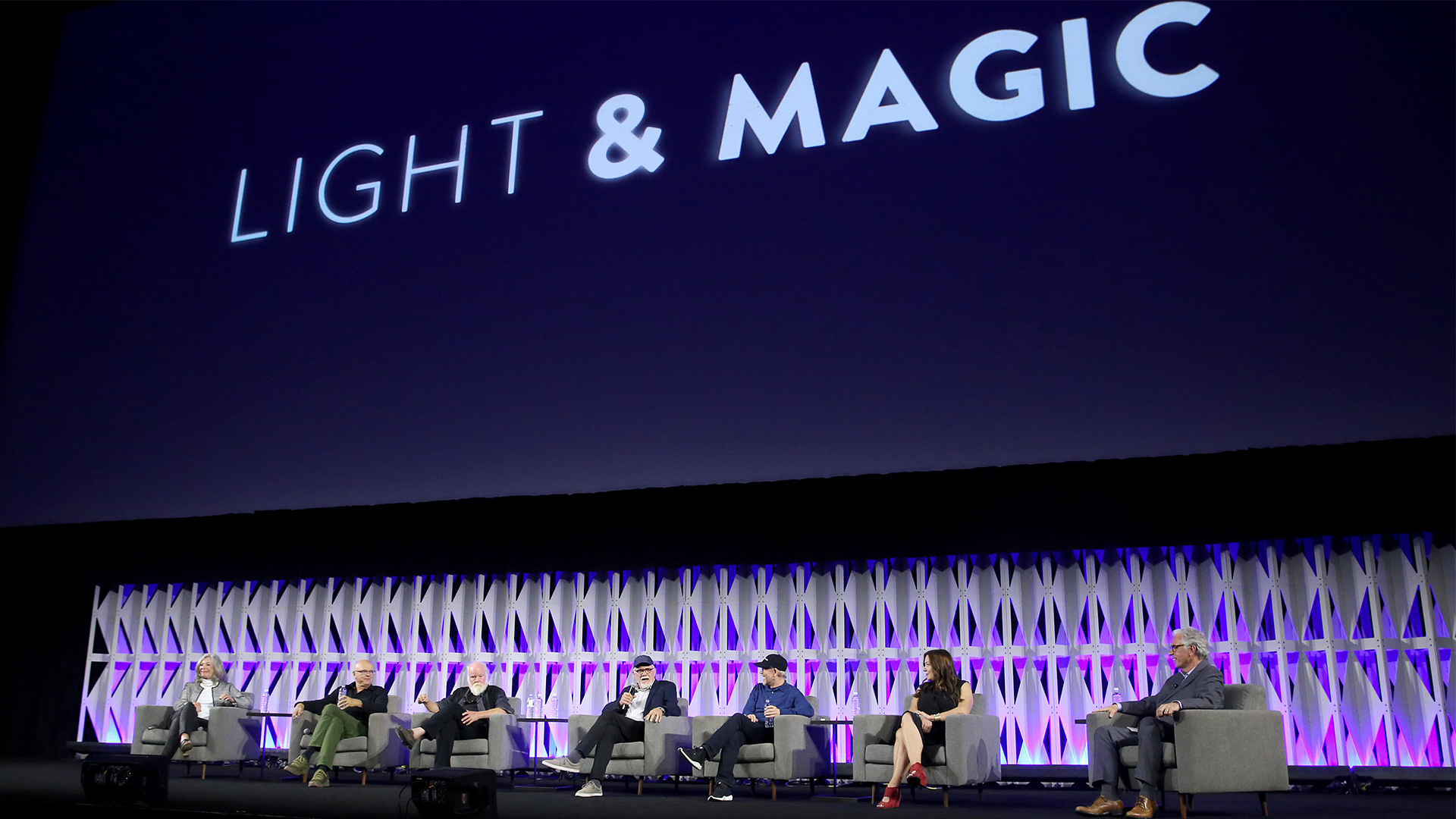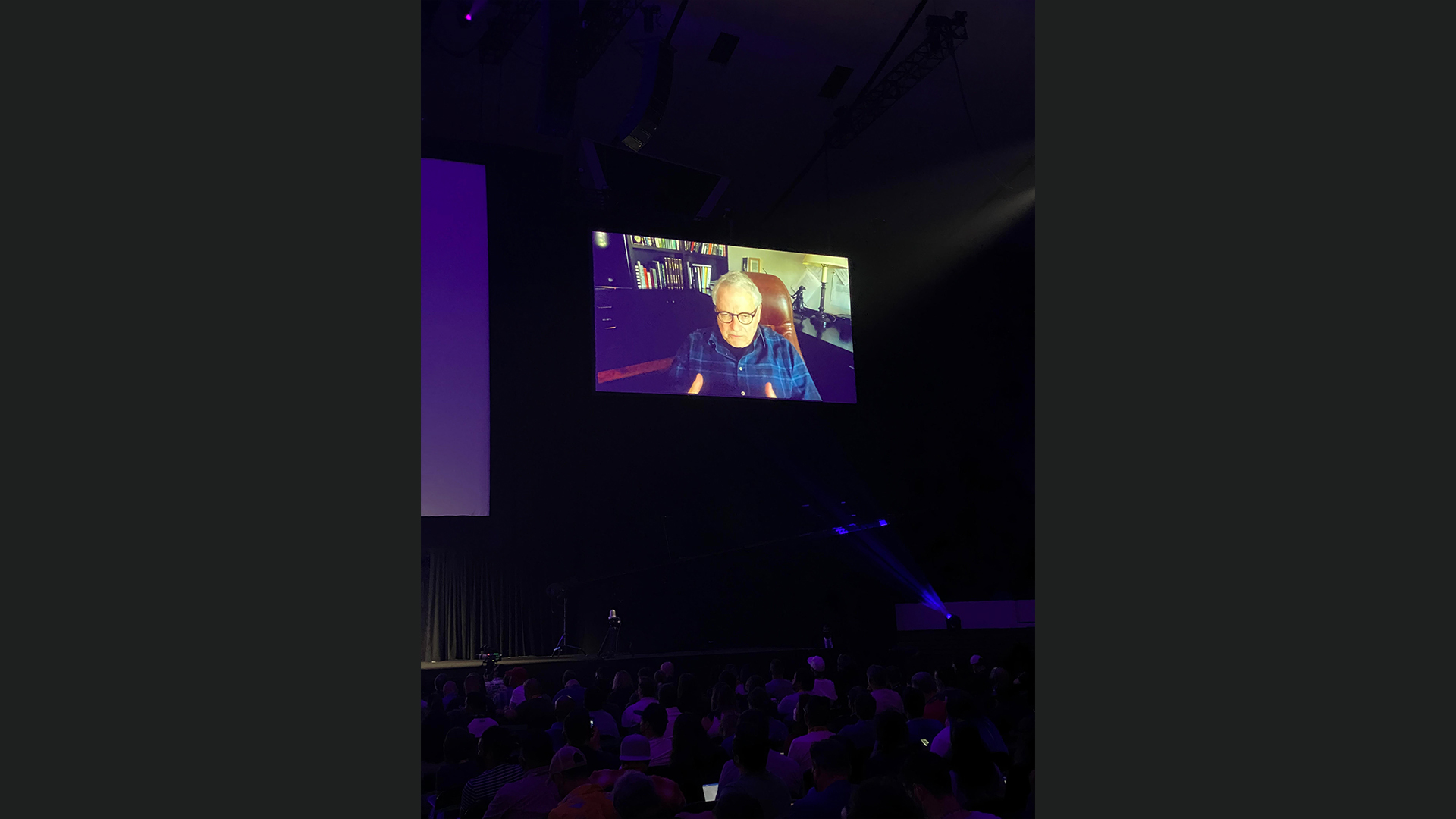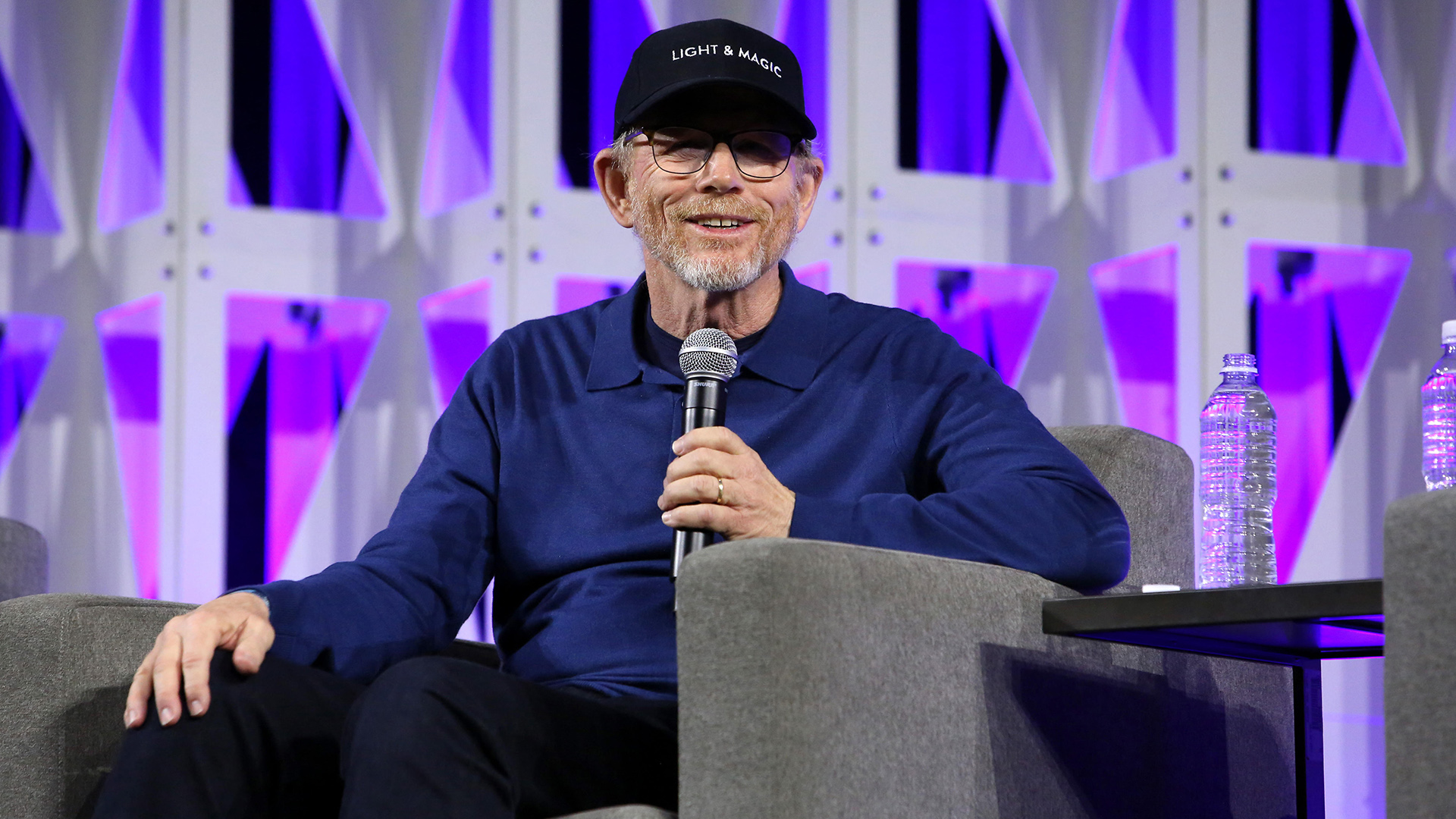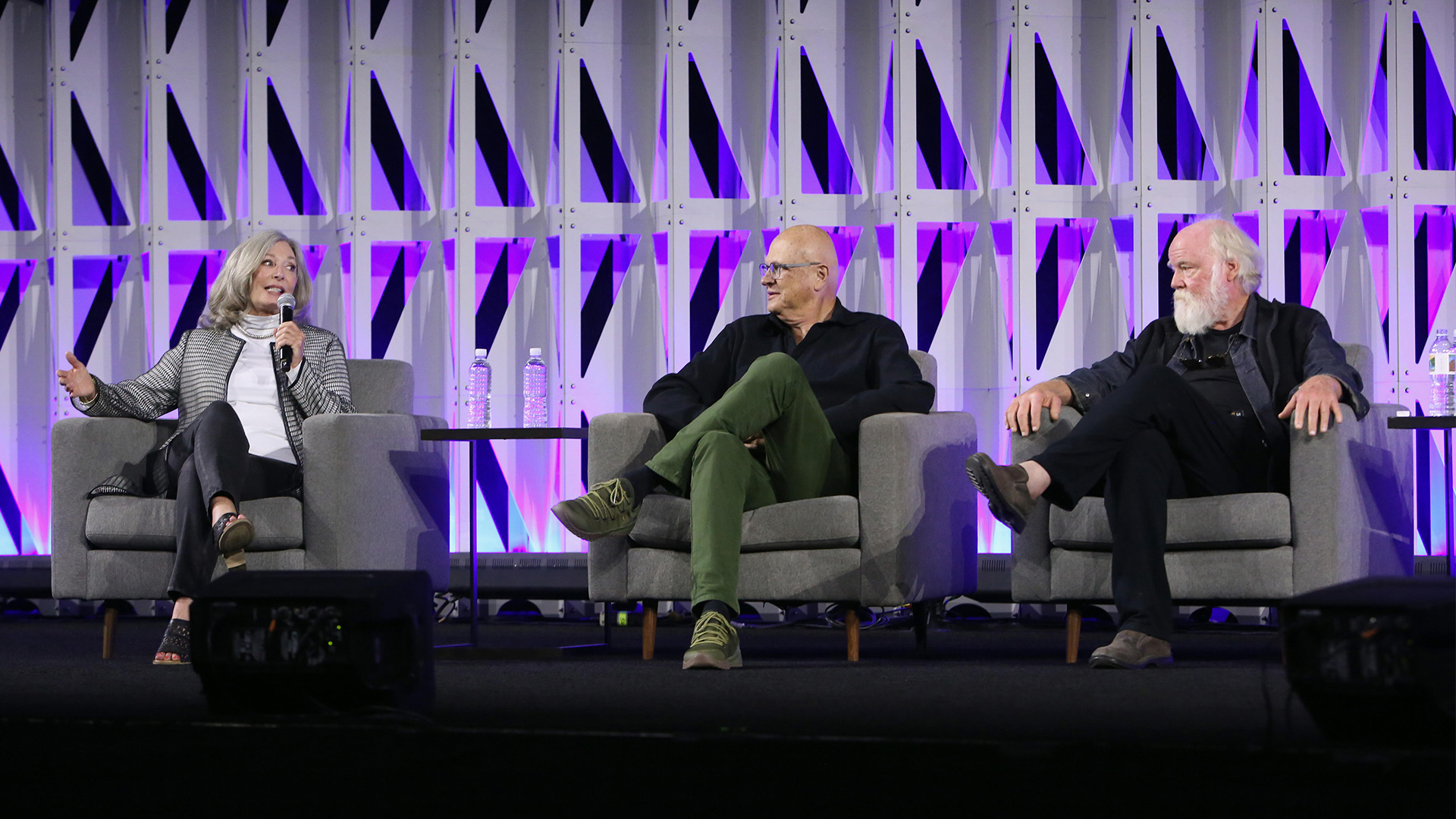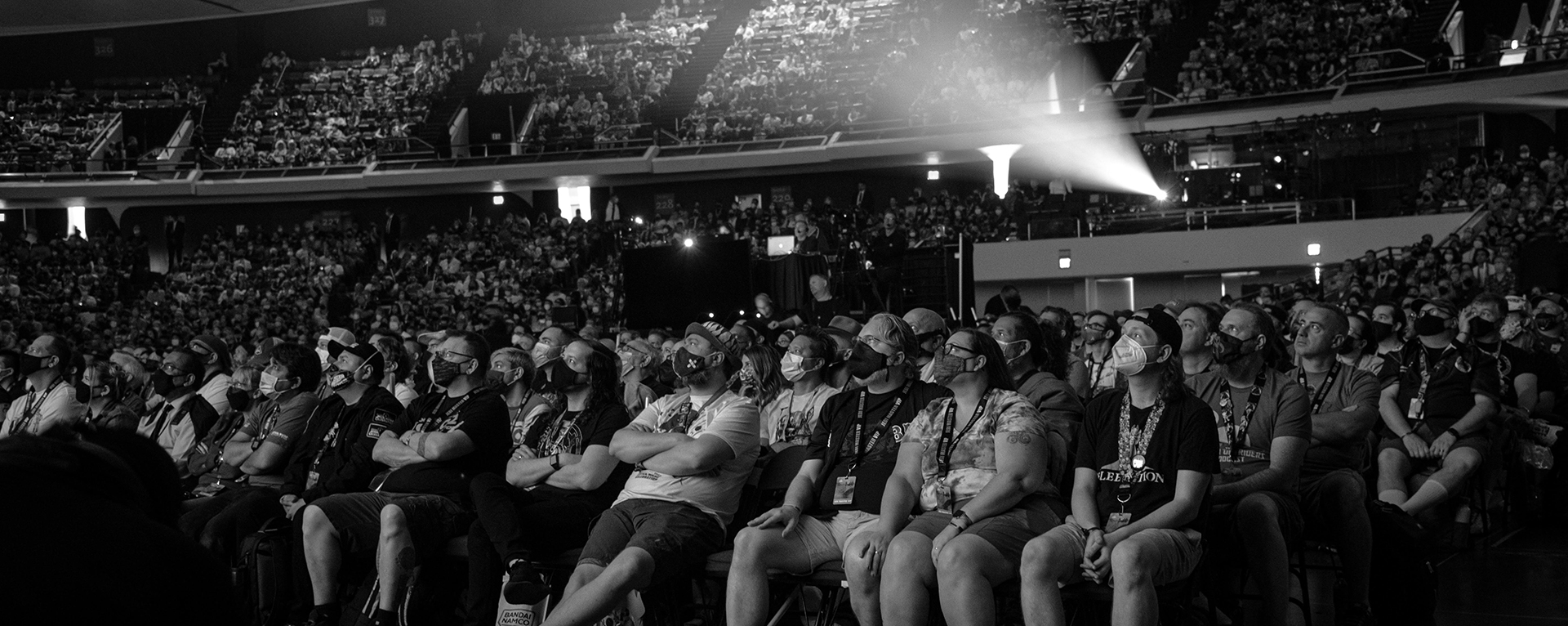Light & Magic Previewed at Star Wars Celebration
ILM Luminaries Gathered to Discuss Their Own Story Told in a New Documentary Series
Filmmaker Lawrence Kasdan—himself with a number of credits in the Lucasfilm canon—has helmed a new six-part documentary series coming to Disney+ on July 27. Light & Magic chronicles the nearly 50-year history and intrepid culture of Industrial Light & Magic (ILM).
Recently at Star Wars Celebration in Anaheim, a group of veteran creatives from ILM gathered to discuss just what has made the visual effects house so distinctive. They included visual effects supervisor Dennis Muren, production manager Rose Duignan, animation supervisor Phil Tippett, and art director Joe Johnston. They were joined by series creator Lawrence Kasdan, Lucasfilm’s present day general manager Lynwen Brennan and longtime ILM collaborator Ron Howard, who along with Brian Grazer served as executive producer on Light & Magic.
After more than 40 years of association with Star Wars and Indiana Jones storytelling, Lawrence Kasdan expressed his own curiosity as to how this group of “geniuses” came together under the direction of Lucasfilm founder George Lucas and original visual effects supervisor John Dykstra on Star Wars: A New Hope (1977).
“It was a wild place,” Kasdan remarked of the earliest days at ILM. “At first no one knew exactly how it was going to work. There was a lot of improvising. That led to a lot of communication. People getting to know other people’s skills, [and] suggesting that those skills could be expanded. When someone needed help, they would go to someone else and they would always try to help. For 40 to 50 years, it’s been that kind of environment where geniuses help geniuses.”
Joe Johnston expressed how the series allows the audience to engage with ILM’s story from “the inside out.” He saw himself as an example of the eclectic range of backgrounds that fostered the original group at ILM. As an industrial designer working on commercial products, Johnston answered a recruitment flyer to join the growing company’s art department. He was delighted to find a role where “ I could design stuff where it doesn’t have to work, it just has to look great,” as he put it. His contributions to that first Star Wars production included the re-design of the spacecraft for Han Solo, what ultimately became known as the Millennium Falcon.
Dennis Muren was adamant that “one of the things we really worked on was training new people who were coming in. We hoped they’d be there long enough so that people could learn from us. We were open with what we were doing. There were no secrets among us.” His experience participating in the documentary was less an analysis of how certain effects were achieved but why the culture of ILM evolved in the way that it did.
Like many at ILM past and present, Muren’s fascination with motion pictures started early. “From a very young age, I was attracted to visuals,” he said in a preview clip, “to spectacles that I couldn’t see in real life. It was compelling to be able to see some giant creature of some sort that I couldn’t walk out of the theater and see, and I just wanted to see those things for real. In those days you couldn’t repeat a movie over and over again…. I wanted to recreate in my mind these memories of what I’d seen in the theater and there was no way to unless you did it yourself.” Muren got his start crafting elaborate home-movies with fantastical effects sequences.
Phil Tippett shared roots with Muren as an avid film fan from a young age. Joining ILM, his contributions to Star Wars were mainly focused on the design and construction of beloved characters and creatures, from the tauntaun on the ice world of Hoth to the denizens of Jabba the Hutt’s palace. Tippett described George Lucas’ process of finding characters from interesting designs as akin to “a documentary filmmaker” in that “he just wanted to go explore and see what happened.”
With his flavorful candor, he explained that “most of us don’t think about this stuff at all. We just move on and go on to the next thing and forget.” His take on ILM’s success was that the studio had been a sort of “paleontological bubble,” an historical anomaly like “the Pony Express or the cowboy that turns into these mythological things…” The experience of participating and watching the series made him feel “wistful” for his time with the company.
Rose Duignan arrived at ILM a little over halfway through production on A New Hope, a time when the quantitative demands of the visual effects load were presenting organizational challenges. How could so many effects be completed on time?
“I came in with the second wave, pretty much the last nine months, like giving birth to 365 shots,” she explained. “We have to credit George Mather, who was brought in to come up with a production management system because George [Lucas] had gotten back from shooting the live-action in England…and half of [the budget] was gone. They’d built the Dykstraflex and 70 models…. They’d created a whole new way of doing blue screen. They had to refurbish all kinds of optical equipment, but nothing in the can, not a single shot…. The movie was six months away.”
Duignan recalled an equally infamous and memorable day when Dykstra and a group of ILMers were playfully lifting an old refrigerator into the air atop a forklift and letting it crash down to the ground. At the same moment, a limousine arrived with Lucas, producer Gary Kurtz, and a 20th Century Fox executive inside. “They get out of their limo, they look at what’s happening, and they got right back in the limo and left,” she said as the crowd laughed. “I knew we were in deep, deep trouble. That’s when they started calling us the country club… We were not a country club, we worked so hard. We were so young…and it was so much fun.” As a production coordinator, Duignan followed both George Lucas and John Dykstra throughout the process, tracking notes and updates.
Ron Howard’s association with Lucasfilm stretches back to the company’s first production, American Graffiti (1973), in which Howard took one of the lead roles as high school graduate Steve Bolander. It was on the set of that film that George Lucas told Howard of his desire to make a film that combined the technical advancements of the recent 2001: A Space Odyssey (1968) with the excitement of classic serials like Buck Rogers. ILM would make the vision possible in A New Hope, opening the doors for new filmmakers like Howard to bring their own visions to the company with subsequent projects.
Watching Star Wars, Howard “began to understand that [Lucas] was applying technology and that cinema does that really, really well. It uses new advances one after another…. This was kind of a mind-blowing leap…. Then, as I began to actually become a customer of ILM, a director making a film there, the first one being Cocoon [1985], it was fascinating for me. I was very intimidated because I was actor-centric, character driven, and I loved this story but I really didn’t understand [visual effects]…. I immediately found that the energy there was more like talking to artists and creatives and fellow writers, musicians, actors. If I had those kinds of conversations, I could let them be the magicians and remarkable things would happen.”
Lynwen Brennan noted that “what you really find in this documentary is that it’s about the people. Yes, we’ve done spectacular things…but it is all about the rebel soul and the people…. The thing that unites us is that DNA, that ‘we-can-do-anything’ spirit and the camaraderie.” She added that after so many decades, that innovative spirit “is still there.” The process involves a complex blend of classic techniques like modelmaking and stop-motion to cutting edge tools like ILM StageCraft. “As with every great step forward that you see from ILM and Lucasfilm…you start with ‘yes’ and then you figure it out.”
George Lucas himself would explain in a preview clip that “movies are special effects. They’ve always been special effects. From Méliès to Harryhausen to 2001, visual effects create the magic that makes people want to go to the movies because they can see things they can’t see any other way.”
Lawrence Kasdan remarked that “part of the genius of George is that he knows what to ask of people. Things that have never been done before—he can make it clear where he wants to go. And even these amazing people he had working with him would often come away saying, ‘Well I don’t know how to do that, but we’re going to do it.’ It had to come in an environment where there was such support, where there was patience. They had to work fast, but there was patience with the process.” He expressed awe at the humility of the ILM crews to solve problems and create visual effects for each other. “I find that generosity very moving in this day and age.”
Kasdan concluded with expressing his “secret desire” to “make this for my grandchildren because when I showed it to them, they got all excited and they wanted to start doing stuff and we immediately started doing stop-motion…” At the heart of the series is the inspiration for people “that problems can be overcome, that their mind is just as important as any plans, that they can be inspired at any moment and people will support them in that. If just a few kids get that out of this show, I’ll be totally satisfied.”
